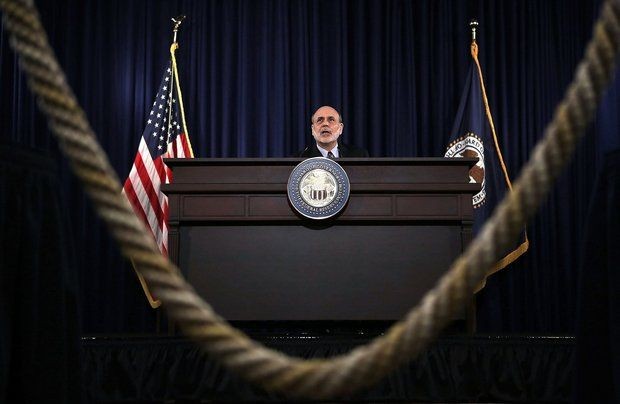How will Fed tapering affect you CBS News
Post on: 26 Май, 2015 No Comment

The Federal Reserves main tool for stimulating the economy is to lower interest rates, and the central bank lowered them aggressively during the recession so much so that its target interest rate hit zero and could not be lowered any further. But lowering interest rates as much as it could was not enough to provide the amount of stimulus required to vanquish a Great Recession, and the Fed turned to quantitative easing in an attempt to give the economy an additional boost.
Now that the economy seems to recovering in earnest. the Fed must decide when to begin reversing its low interest rate policies and tapering its $85 billion-a-month bond purchase program. The Fed has made it clear that the bond buys, which are aimed at stimulating economic activity by keeping long-term interest rates low, will be reversed first. Policy-makers have also emphasized that the bond purchases will be scaled down gradually to avoid delivering a shock to financial markets.
But how will average Americans be affected by tapering? In several ways:
Timing of the taper. The Feds goal is to begin scaling back its monthly purchase of U.S. Treasury and mortgage bonds as growth accelerates so that the stimulus is fully removed just as the economy reaches full employment. If it removes the stimulus too late, the economy could become overheated, causing inflation to increase. However, the Fed has the tools to reduce inflation quickly, so this error would likely be reversed before it became too costly.
Play Video
MoneyWatch
Bernanke defends Fed’s quantitative easement program
Federal Reserve Chairman Ben Bernanke said the Fed’s quantitative easement policy has been successful promoting economic recovery by strengthenin.
A bigger mistake would be to begin to taper too early, or taper too much at the onset. That would put an additional drag on the recovery and cause unemployment to stay elevated longer than if the Fed had the timing right. Higher unemployment is, of course, very costly to households that are struggling to find work and make ends meet.
But while getting the timing wrong could have a large impact on households, the Fed has the ability to adjust the taper midstream in either direction. So the central bank is unlikely to make a large and costly mistake.
Asset values. There is evidence that quantitative easing increases the value of financial assets, such as stocks and bonds, and some people even claim that much of the recent run-up in the stock market is primarily due to the Feds bond purchases. Others believe the effects were more modest. But in either case, households who participated in financial markets either directly or through retirement or other savings vehicles were likely helped by the Feds quantitative easing program.
As the Fed begins tapering, the upward pressure on asset prices will wear off as well, and that will begin reversing whatever effect quantitative easing has had on asset prices. However, if the economy is strengthening at the same time, as it ought to be if the Fed gets the timing and magnitude of the taper correct, then that will tend to push asset prices in the other direction.
So while quantitative easing likely pushed asset prices up, the reversal of this policy does not necessarily mean that asset prices will fall. But it does remove whatever upward price pressure quantitative easing caused in financial markets.
Interest rates. As the Fed begins tapering, interest rates long-term rates in particular could begin increasing. The impact isnt likely to be large because the reduction in rates from quantitative easing was modest, but it could be enough to notice. Even the initial mention of tapering in Fed speeches earlier this year was enough to drive long-term interest rates up a bit. If rates rise, it will have a negative impact on households that borrow and a positive impact on those who lend or receive interest income in some form.
Exchange rate. The impact of the Fed’s bond purchases on exchange rates has been harder to document than the impact on asset values and interest rates, but theoretically quantitative easing should put downward pressure on the exchange rate. To the extent that this has occurred, it helps households employed or otherwise associated with firms that rely on exports, and hurts households connected to importers.
2013 CBS Interactive Inc. All Rights Reserved.














